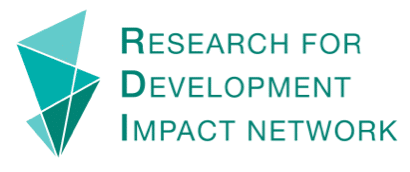Fast Track Impact is an organisation created by Professor Mark Reed that seeks to train researchers in maximising their impact. Operating primarily through online workshops, they have trained over 8000 researchers around the world.
What is the point of this document?
Fast Track Your Impact created this document as a summary of the key points of their workshops. Defining “impact” as “the good that researchers do in the world”, the goal of Fast Track Impact is to maximise this good, and their work seeks to guide researchers to
Who is this document for?
The linked documents are intended for those working in research and communications, providing guidance or a better understanding of what impact consists of, and strategies to maximise impact.
Why should I read it?
Measuring impact can be a tricky task for researchers, due to the countless factors that can shape and influence the effectiveness of research output in affecting change. Fast Track Your Impact is an incredibly helpful tool that can help clear the misconceptions surrounding research impact and provide tips for achieving effective research impact.
Outline:
An easy way for researchers to claim impact in communications is by measuring media coverage and social media clicks. Unfortunately, this is not a suitable measure for measuring true impact. The short-term nature of media coverage is at odds with the long-term change sought in international development. Too much emphasis when discussing impact is placed on reach, which is a useless metric if attitudes and perceptions aren’t changed. Audiences can consume media without understanding the content.
Media should therefore only be perceived as engagement, not an impact in its own right. To be proper “research impact”, benefits must be clearly linked to research from your institution. It is not enough to focus on activities and outputs that promote research impact, there must also be evidence of research impact. Opinions must be affected, and change must be prompted in order to declare impact.
Lack of planning is often one of the key reasons impact fails to be generated. Because researchers often fail to plan how to generate impact from research, it can be difficult to convert mere awareness of research into measurable benefits. Logic models are suggested as an easy, effective measure for researchers to plan for impact. These models involve:
- An identification of impact goals
- Media activities that achieve these goals for beneficiaries
- Indicators to monitor impacts as they arise
There are different types of impact that can be pursued individually or together. Ten types are identified. When developing strategies, the type of impact must be considered, and strategies must be made accordingly.
Figure 1: What types of impact are there? Fast Track Impact
A public/stakeholder analysis is recommended to provide a holistic understanding of those you may want to engage with. Questions should be asked regarding:
- Who is interested in the research?
- What is the nature of their interest?
- How interested are they?
- Why may they be disinterested?
- How might they influence the ability of research to achieve impact?
- Can they facilitate impact?
- Can they block impact? Are their interests compromised or harmed by your research?
- Who is impacted?
Through careful analysis of those affected by research, researchers can then identify key stakeholders and groups who are instrumental in affecting the effectiveness of achieving impact. From here, communications strategies can be developed, targeting key stakeholders.
Good communication starts with empathy. To properly communicate with an audience, researchers must understand them. The following factors must be considered.
- Context and purpose
- Who initiates and leads on the pathway to impact
- Representation
- Design
- Power
There is discussion on the following key tools for monitoring media engagement on social media. These tools all have their strengths and weaknesses and should be used carefully.
- Social Media Analysis: an inexpensive, time effective method to gain a broad overview of impact, monitoring viewership, sharing, comments.
- Funnel: Directing those engaging with media towards further content and surveys. Inexpensive, but requires more time to develop.
- Before/After Polling: Rigorous and costlier, this method involves engaging with a third party to poll users’ thoughts and opinions before and after engaging with media. This can be useful in understanding the changes in opinion and thought that results from exposure to media.
Finally, great importance is given to communication between researchers and press offices. To ensure that research is communicated effectively, a shared understanding between offices is required. Regular, structured engagement is therefore recommended to maximise impact.
Where can I learn more?
RDI Network hosts training workshops for members with Fast Track Impact. Keep an eye on their events to participate in future workshops.
Links:
- Free online impact training for researchers, (Text, 5min)
- Media Impact Guide and Toolkit (Blogpost, 30min)
FYI RDI hosts this training for members:
- https://rdinetwork.org.au/events/fast-track-your-research-impact/
- https://rdinetwork.org.au/events/fast-track-your-impact-online-workshop-with-mark-reed/
- https://rdinetwork.org.au/events/co-producing-evidencing-impact-webinar/



